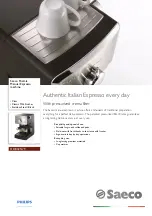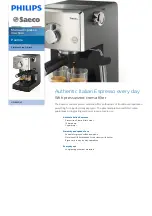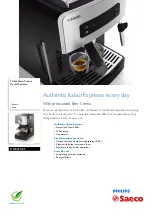
The Stitch Master has a thread
tensioning knob on the front that the
upper thread runs through (
57
).
The upper tension knob can be turned up
to five revolutions to compress a spring that
squeezes two disks together.
When the presser foot is lifted the upper
tension disks are pushed apart. This releases
the top thread tension so leather work can be
removed from under the machine foot without
fighting thread tension.
DO NOT
lift the presser foot when the upper
tension knob is less than a 1/2 turn from
maximum (turned snugly clockwise).
If upper tension is tightened all the way down,
raising the presser foot may bend the lever
inside the machine that separates the disks,
preventing the disks from opening correctly.
Adjusting Presser Foot Tension
The amount of downward pressure put
on the material by the presser foot is
controlled by the Pressure Regulating
Thumb Screw (
A
). This screw compresses
a long coil spring above the presser foot.
Turn the screw clockwise to increase the
downward foot pressure (
58
). Turn the
screw counterclockwise to decrease the foot
pressure (
59
).
When sewing a thick leather assembly, set
the regulating thumb screw to be very loose.
To do this, turn the thumb screw until it comes
free of the machine and then rethread it
about three complete rotations. Even with this
setting, downward foot pressure is significant
because the thickness of the material will
raise the feet higher than normal, creating
substantial spring compression.
The sewn assembly may be so dense that the
needle’s extraction overcomes the presser foot’s
downward force. If this is the case, you may
notice the assembly popping up and down while
being sewn and you may be skipping stitches.
To fix this, you will need to increase the pressure
by screwing the thumb screw down further.
A
57
58
59
Stitch Master
®
Guidebook: Using the Stitch Master
38
37
















































